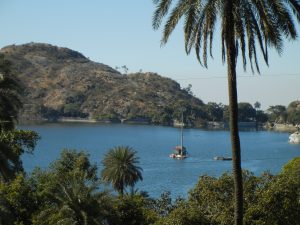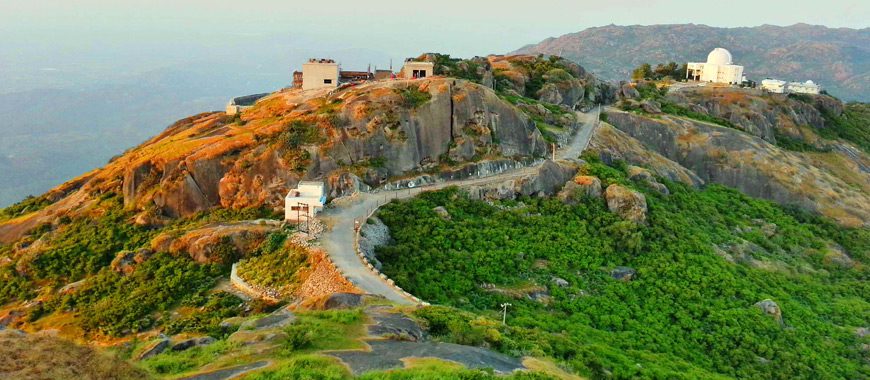Reading Time: 3 minutes
Ruchira recalls a holiday, when she was in school, at Mount Abu. A Different Truths exclusive.
 While I was at school, during summer vacation, my parents decided to take us on a tour of Rajasthan. Interestingly, the itinerary included Mt Abu, the solitary hill-station nestling in the sandy deserts of Rajasthan. I had already read about the place in-depth, in my third grade Hindi textbook. And I confess, I was fascinated. Therefore, my joy knew no bounds when I heard of the proposed tour. The news that we were heading for Rajasthan in the pretty scorching month of April spread like wildfire in the family circle; folks called us crazy and tried to dissuade us. However, my adventurous parents eventually had their way.
While I was at school, during summer vacation, my parents decided to take us on a tour of Rajasthan. Interestingly, the itinerary included Mt Abu, the solitary hill-station nestling in the sandy deserts of Rajasthan. I had already read about the place in-depth, in my third grade Hindi textbook. And I confess, I was fascinated. Therefore, my joy knew no bounds when I heard of the proposed tour. The news that we were heading for Rajasthan in the pretty scorching month of April spread like wildfire in the family circle; folks called us crazy and tried to dissuade us. However, my adventurous parents eventually had their way.
One brilliant sunny morning in late April we arrived at the world-famous tourist destination. A slight rewind: we had travelled by train to Udaipur from where Abu Road the nearest railhead is approximately 160 kms by road. An overnight journey smoothly covers the distance. From Abu Road we boarded a rickety country bus to take us up to the hill station. In case you are thinking about cleanliness and comforts, well think again.
Passengers were herded into the bus (cattle class, huh?). We were swamped by sweaty, unkempt faces; an odour of sweat mingled with dust hung heavy on the air. Honestly, we could have opted for a deluxe bus but that would involve a certain degree of waiting and we would lose out on time. We had just a day to explore the place.
As the bus trundled its way up the hillside, the landscape was a feast to the eyes!
As the bus trundled its way up the hillside, the landscape was a feast to the eyes! I have visited bulk of hill stations dotting northern India, but this was starkly different. Instead of alpine vegetation, the coniferous tree setal, we could see date palms, shrubs and thorny trees all around. Call it my childish fancy or foolishness but I did not perceive any remarkable difference in temperature (it is obvious in other hill stations) as we moved from plains to a higher altitude.
Our first halt was at the famous Nakki lake. Surrounded by profuse vegetation and natural, rugged rock formations the placid waters of the lake soothed us after the tedious journey. According to legends and parables the beauteous lake was formed after some demi-gods (alternatively demons) scratched the ground surface with their (nakh) nails. The name stuck on.
Next, we wended our way to Mount Abu’s crowning glory i.e., Dilwara Jain temples. These marble edifices may well be compared to the magnificent Taj Mahal in beauty and splendour. There are five temples dedicated to the five prominent Tirthankars (Jain prophets/preachers) out of a bevy of twenty-four. The temples were built at various points of time between the 11th & 13th centuries. They are believed to be the brainchild of the reputed architect duo Tejpal and Vastupal. The megaproject was (reportedly) meticulously supervised by Vimal Shah, a minister and Commander-in-Chief of Bhimdev I, the king of Gujarat. The mammoth task was accomplished in almost 14 years involving 1500 sculptors and their 1200 assistants.
The interiors of the temples present a bewitching spectacle. In poetic terms they could be hailed as a symphony in marble.
 The interiors of the temples present a bewitching spectacle. In poetic terms they could be hailed as a symphony in marble. It is astonishing to think how the glistening, smooth, yet lifeless chunks of marble were dexterously and flawlessly chiseled into pillars, colonnades, arches, ornate, chandelier-like pendent carvings on ceilings and what have you! Tourists witness a profusion of icons, statuettes, and motifs as far as the eyes can see. And the list is virtually unending – from peacocks, horses, and elephants to deities like Kuber, Indra, Varuna, Vayu, and Yama; there are numerous Panchakalyanaks (vignettes from the lives of Tirthankaras), Lord Krishna in myriad moods and such like. Amidst this artistic extravaganza in marble, the idols of the Tirthankars serenely repose in their respective chambers, their countenances exuding kindness and compassion for Mankind and all living beings. It is afternoon; the sun slides westward, setting the horizon ablaze with hues of orange, red, and liquid gold; against this flamboyant backdrop, the immaculately white shrines assumes a celestial look. A colourful vista unfolds before my eyes…
The interiors of the temples present a bewitching spectacle. In poetic terms they could be hailed as a symphony in marble. It is astonishing to think how the glistening, smooth, yet lifeless chunks of marble were dexterously and flawlessly chiseled into pillars, colonnades, arches, ornate, chandelier-like pendent carvings on ceilings and what have you! Tourists witness a profusion of icons, statuettes, and motifs as far as the eyes can see. And the list is virtually unending – from peacocks, horses, and elephants to deities like Kuber, Indra, Varuna, Vayu, and Yama; there are numerous Panchakalyanaks (vignettes from the lives of Tirthankaras), Lord Krishna in myriad moods and such like. Amidst this artistic extravaganza in marble, the idols of the Tirthankars serenely repose in their respective chambers, their countenances exuding kindness and compassion for Mankind and all living beings. It is afternoon; the sun slides westward, setting the horizon ablaze with hues of orange, red, and liquid gold; against this flamboyant backdrop, the immaculately white shrines assumes a celestial look. A colourful vista unfolds before my eyes…
©Ruchira Adhikari Ghosh
Photos from the Internet
.

















